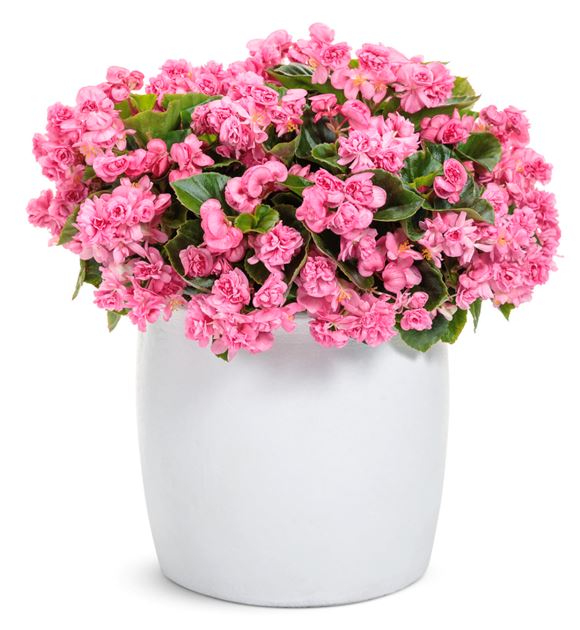

In tropical or subtropical climates, where it often escapes cultivation, naturalizing and becoming a weed, it can be cultivated permanently in the open ground, elsewhere it is usually cultivated as annual, seen the ease with which it reproduces, flowering from spring to the first frosts.
#Wax begonia uses full#
This plant, even if it prefers a slightly shaded position, also adapts to shade and full sun, provided the substratum is kept constantly humid during the vegetative period. The fruit is a trialata capsule, 2-3 cm long, containing many small and very fine seeds.īegonia cucullata is a plant that is sometimes harvested from the wild for local medicinal use or, in newly introduced areas, as an ornamental plant. The flowers bloom in summer or all year round in warmer locations. The female flowers have 4-5 tepals of the same color as the male ones they are elliptical or obovate, 4-14 mm long and 2-8 mm broad. It produces bisexual inflorescences borne on axillary cymes with male flowers with four white, pinkish or red tepals, those of the outer pair are almost circular 8-15 mm in diameter, those of the inner pair obovate about 10 mm long and 6 mm wide.

It has almost symmetrical succulent leaves, pale green to light reddish brown in colour these are ovate, glabrous, 4-8 cm long and 6 cm broad, with edged, glossy and toothed kerning. Its preferential habitat is that of the tropical zones in areas of mountain plateaus.īegonia cucullata is an erect perennial herbaceous plant that can reach a height of up to one meter, with green or reddish semi-succulent stems. In these pedoclimatic conditions, the plant can invade roadsides, deforested areas, overexploited pastures and wastelands. This plant has been introduced to other areas where, in some cases, it has also become invasive, such as in Florida, particularly from the northern and central peninsula west to the central Panhandle, and also in Georgia. The specific cucullata epithet comes from the Latin cucúllus, hood: hooded.īegonia cucullata is a plant native to South American countries, especially Argentina, Uruguay, Paraguay and Brazil (in the Cerrado and in the Atlantic Forest, distributed by Bahia, Mato Grosso, Goiás, Distrito Federal, Mato Grosso do Sul, Minas Gerais, Espírito Santo, São Paulo, Rio de Janeiro, Paraná, Santa Catarina and Rio Grande do Sul. Appointed naval steward of the new arsenal port of Rochefort he contributed to the transformation of the nascent city which today has the richest collection of begonias in Europe in the botanical garden “Conservatoire du Bégonia”. The term Begonia is the name of the genus established by the French botanist Charles Plumier (1646-1704) and taken up by Linnaeus, dedicated to the Governor of the French Antilles and collector of plants Michel Bégon (1638-1710). Within this species the following subspecies are recognised: The clubbed begonia (Begonia cucullata Willd., 1805) is a herbaceous species belonging to the Begoniaceae family.įrom a systematic point of view it belongs to:


 0 kommentar(er)
0 kommentar(er)
